Gyudon (牛丼), or “beef bowl,” is one of Japan’s most popular types of donburi, a category of dishes that serve toppings over rice in a bowl.

In gyudon, thinly sliced beef and onions are simmered in a savory-sweet sauce of soy sauce, dashi, and mirin, creating a satisfying, quick meal with rich flavors and comforting textures.
This dish is widely enjoyed across Japan and has become a go-to for busy locals due to its simplicity and affordability. It’s one of my personal favorite comfort foods I grew up eating. I learned how to make it from a young age, too, because of how easy it is to cook.
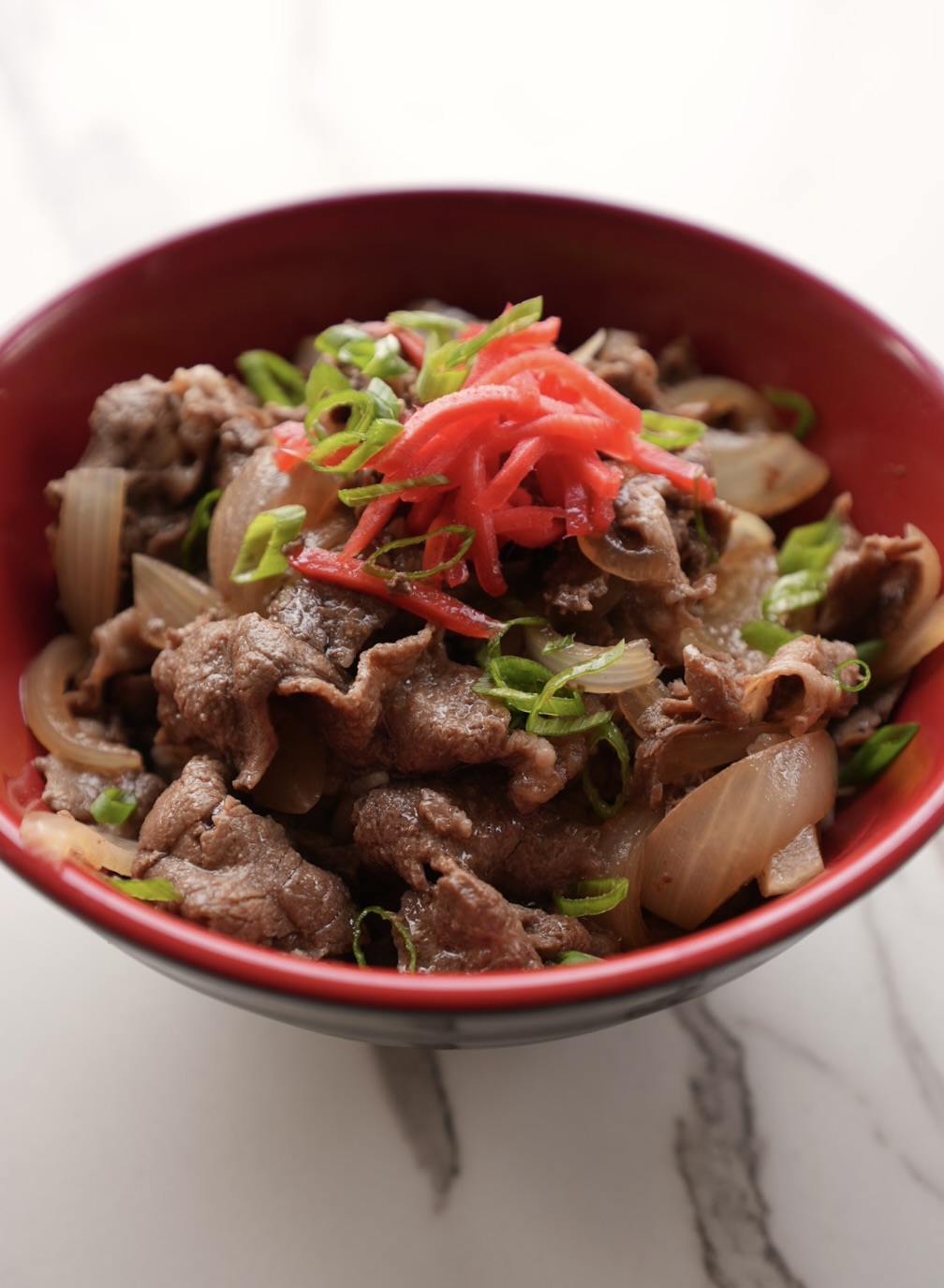
In Japan, gyudon is a widely loved dish found everywhere, from popular chains like Yoshinoya, Sukiya, and Matsuya to small, hole-in-the-wall spots. These chains serve it quickly and affordably, with topping options like green onions, soft-boiled eggs, and grated daikon, making it a go-to for busy locals and travelers.
Whether enjoyed as a quick lunch on the go or as a comforting dinner after a long day, Gyudon never fails to satisfy. Its warm, hearty flavors and soul-soothing qualities make it a true comfort food classic, beloved by both locals and visitors.
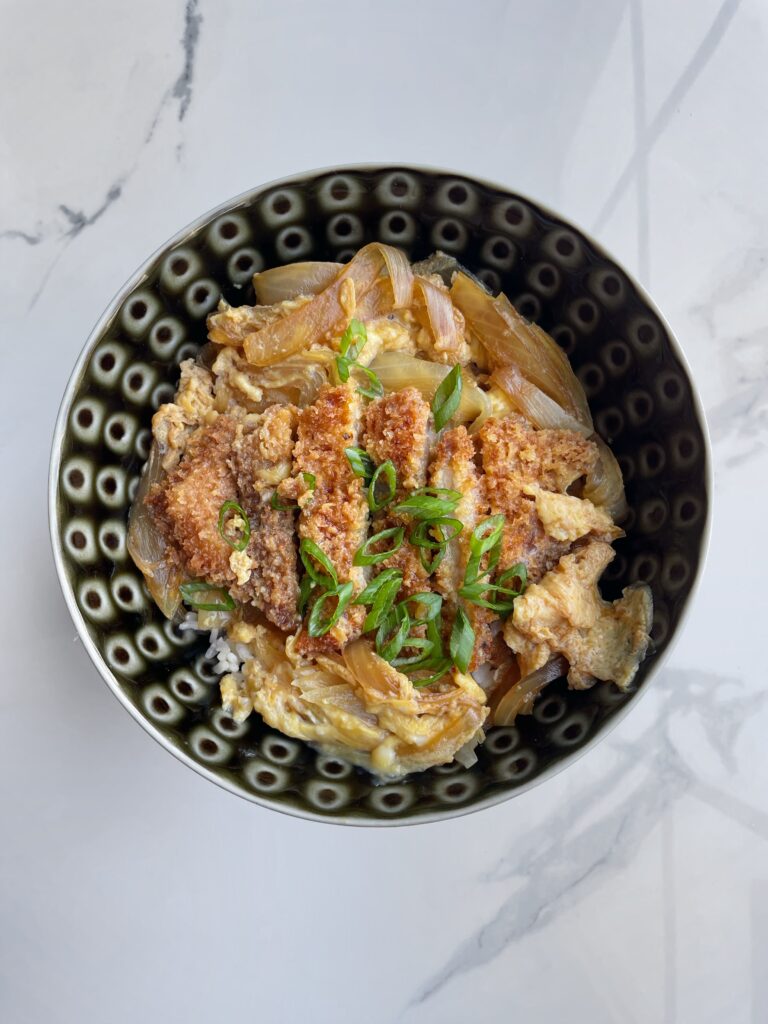
What is “Donburi”?
In Japan, donburi (丼) refers to a comforting and hearty rice bowl dish, where a flavorful topping – like beef, chicken and egg, etc. – is served over a bowl of rice. The word donburi actually means “bowl,” and it describes both the dish and the deep bowl it’s served in.
Each variation is named after its topping, with the shortened version of donburi, don, at the end of the word. For example, gyudon (beef bowl). Donburi is popular across Japan for being quick, affordable, and satisfying, whether served at restaurants, bento shops, or homemade.
Here are two of my other favorite donburi recipes:
- Oyakodon: Japanese rice bowl dish made with tender chicken, soft-cooked egg, and sweet-savory dashi broth served over steamed rice.
- Katsudon: Pictured. Crispy, breaded pork cutlet simmered with egg and onions in a savory-sweet sauce, all on top of a hot bowl of rice.
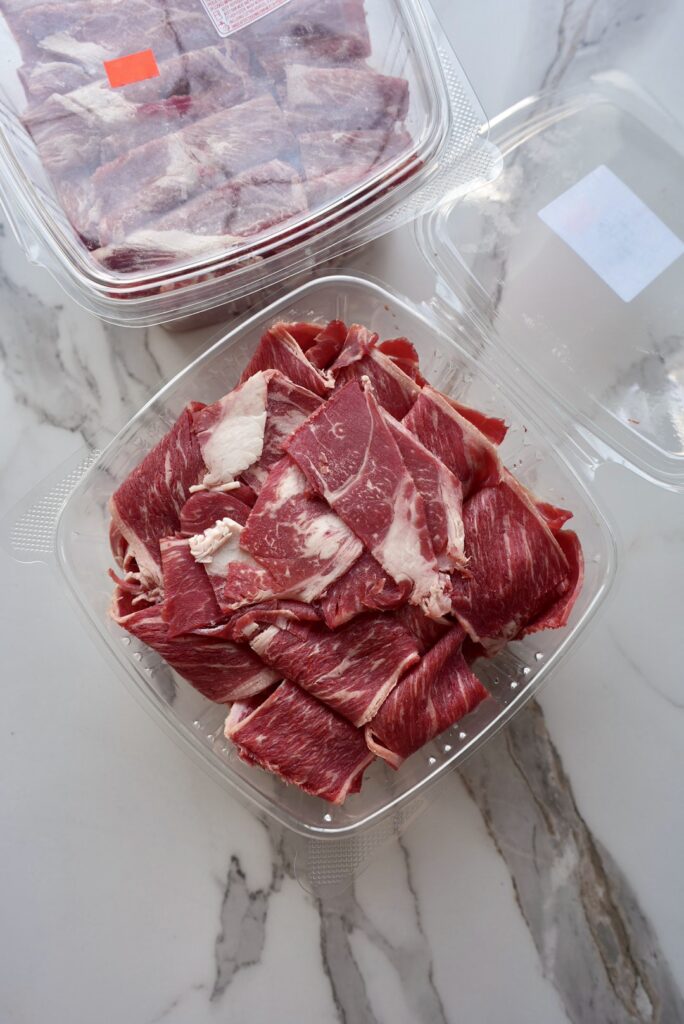

Ingredients
- Thinly sliced beef: Tender cuts like ribeye or chuck are ideal. They cook quickly and absorb flavor well, creating that melt-in-your-mouth texture gyudon is known for. I usually buy mine pre-sliced at the Asian Market sold in plastic containers (pictured). If pre-sliced isn’t available, freeze the beef for 1½ hours to slice it easily yourself – or ask the butcher to do it for you! Any type is fine, but I recommend ribeye or sirloin.
- Dashi stock: The savory backbone of the dish, giving the broth a subtle umami flavor. I touch more on this ingredient below.
- Sugar: Balances out the salty and umami notes.
- Mirin: A sweet Japanese cooking wine that adds complexity, mild acidity, and gloss to the broth.
- Yellow onion: Adds sweetness and depth to the broth as it softens and caramelizes while simmering with the beef.
- Soy sauce: Provides saltiness and deep umami flavor, tying all the ingredients together.
- Cooked rice: A fluffy bowl of warm Japanese short- or medium-grain rice soaks up the flavorful broth and acts as the hearty base for the beef.
- Red pickled ginger (beni shoga): Optional but traditional – adds a tangy, refreshing contrast to the rich beef.
- Sliced green onions: A fresh finishing touch that adds brightness and a bit of crunch.
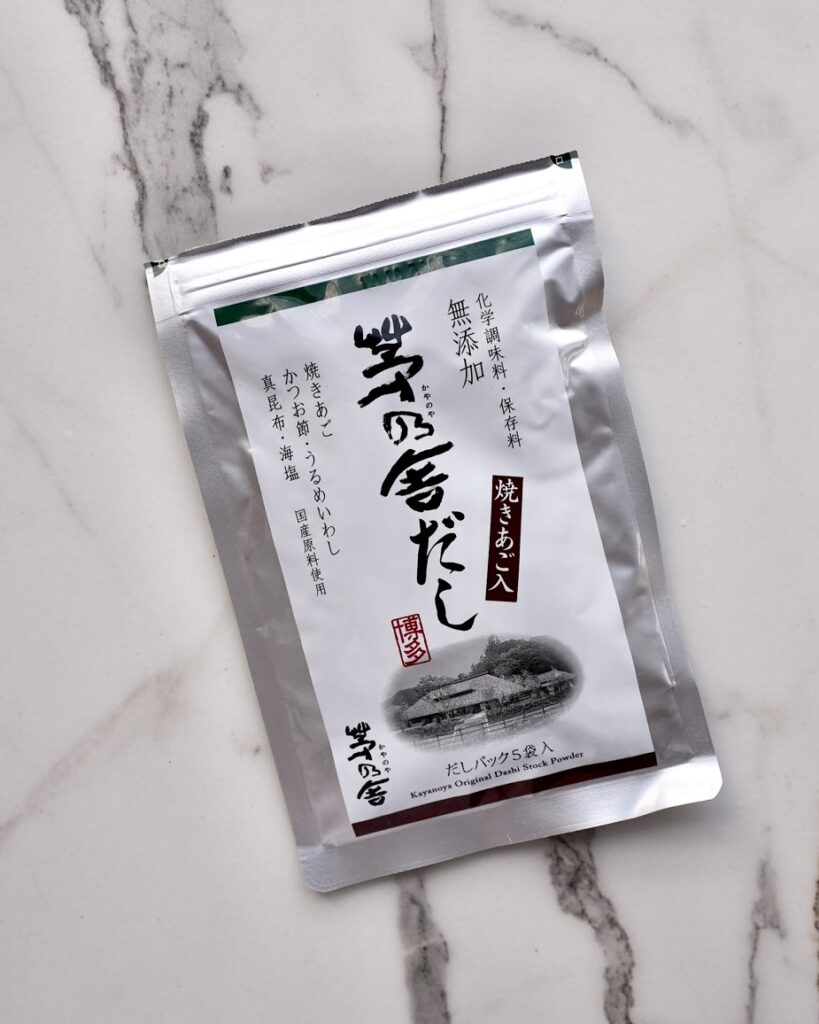
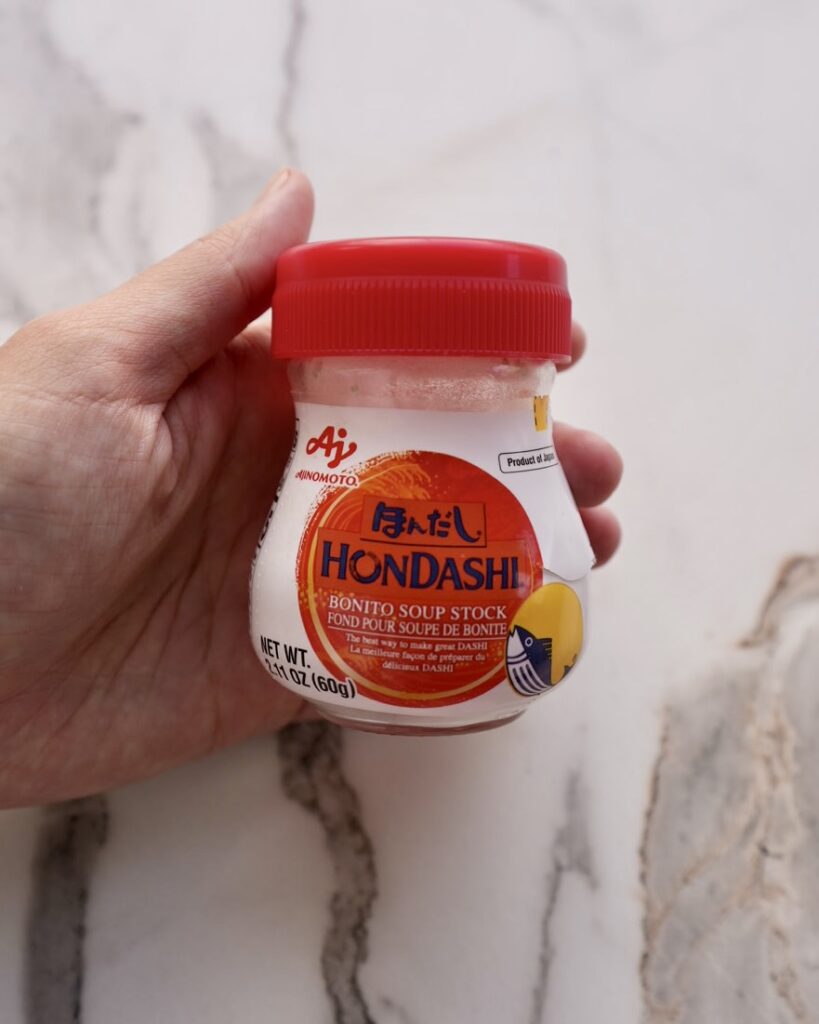
How to Make Dashi: Japanese Cooking Stock
There are three main ways to make dashi, each with its own advantages in terms of flavor, ease, and time. I ordered them from most complex to simplest:
- Dashi from Scratch: Traditional dashi, made by simmering kombu (dried kelp) and katsuobushi (dried bonito flakes), is considered the best method. Soak the kombu in water, heat just below boiling, and add katsuobushi. This method is ideal for dishes with the purest flavor.
- Dashi Packets: Dashi packets, resembling tea bags, contain dried kombu, katsuobushi, and sometimes shiitake mushrooms or dried sardines. Just simmer the packet in water for a few minutes for a quick and flavorful broth. Buy dashi packets here from one of my most recommended dashi brands, Kayanoya.
- Instant Dashi (Hondashi): Instant dashi, often called hondashi, is a granulated or powdered form of dashi. Just a spoonful dissolved in hot water creates a quick and flavorful stock. This option is convenient and ideal for busy days. Buy hondashi here.
Recommended Rice Cookers
Do I need to have a fancy rice cooker to make this meal? NO!
Just like anything, generally, the higher the quality, the better. But you can make my rice cooker meals in a cheap rice cooker, too!
Click the rice cooker photos to see my top picks, from $20–$200! I use the Tiger 5.5-cup model shown. About 1/2 cup of Japanese short- or medium-grain rice makes 1 serving.
Key Features to Look For in a Rice Cooker:
- Steaming Basket or Tray: Allows you to steam vegetables or cook other ingredients while the rice cooks.
- Multiple Cooking Functions: Ensure it has settings for steaming, slow cooking, and possibly even baking.
- Non-Stick Inner Pot: Makes cleaning easier and prevents sticking.
- Timer and Keep Warm Function: Useful for planning meals ahead of time and keeping them warm until you’re ready to eat.
What Type of Rice to Use
Choosing the right type of rice can be confusing, especially with so many varieties available. In Japanese cooking, however, Japanese short-grain or medium-grain rice is almost always the go-to choice.
Short-grain rice, often labeled as sushi rice, is particularly prized for its soft and chewy texture, which pairs beautifully with traditional Japanese dishes.
Medium-grain rice is a great alternative if short-grain isn’t available (I actually almost always use medium-grain myself because it’s generally cheaper where I live!). Both are ideal for recipes like this one, where the rice’s stickiness helps meld the flavors into every bite.

Gyudon (牛丼) – Beef and Onion Rice Bowl
- Total Time: 15 minutes
Description
Gyudon is a traditional Japanese dish featuring thinly sliced beef and onions simmered in a savory-sweet sauce, served over rice. It’s a comforting and satisfying meal celebrated for its rich flavors and simplicity.
Ingredients
- 1/2 lb thinly sliced beef (I recommend ribeye or chuck meat, but any type will do)
- 1/2 yellow onion
- 1/2 cup dashi stock (can also substitute using 1/2 cup water and 1 tbsp hondashi, which is a form of instant dashi)
- 2 tbsp granulated sugar
- 2 tbsp mirin
- 3 tbsp soy sauce
- 2 servings rice (I recommend Japanese short-grain or medium grain for the most authentic Japanese experience!)
- For garnishing (optional): red pickled ginger and sliced green onions
Instructions
- To a large pan, bring dashi, sugar, mirin, and soy sauce to a simmer.
- Thinly slice your onions by cutting the onion from pole to pole. Add the onions to the same pan, cooking for 5 minutes on simmer.
- Thinly slice your meat against the grain and add to pan, on top of onions. Let cook for additional 8-10 minutes, covering with a lid.
- Serve over rice and garnish with green onions and red pickled ginger.
- Prep Time: 5 minutes
- Cook Time: 10 minutes
Nutrition
- Serving Size: 2

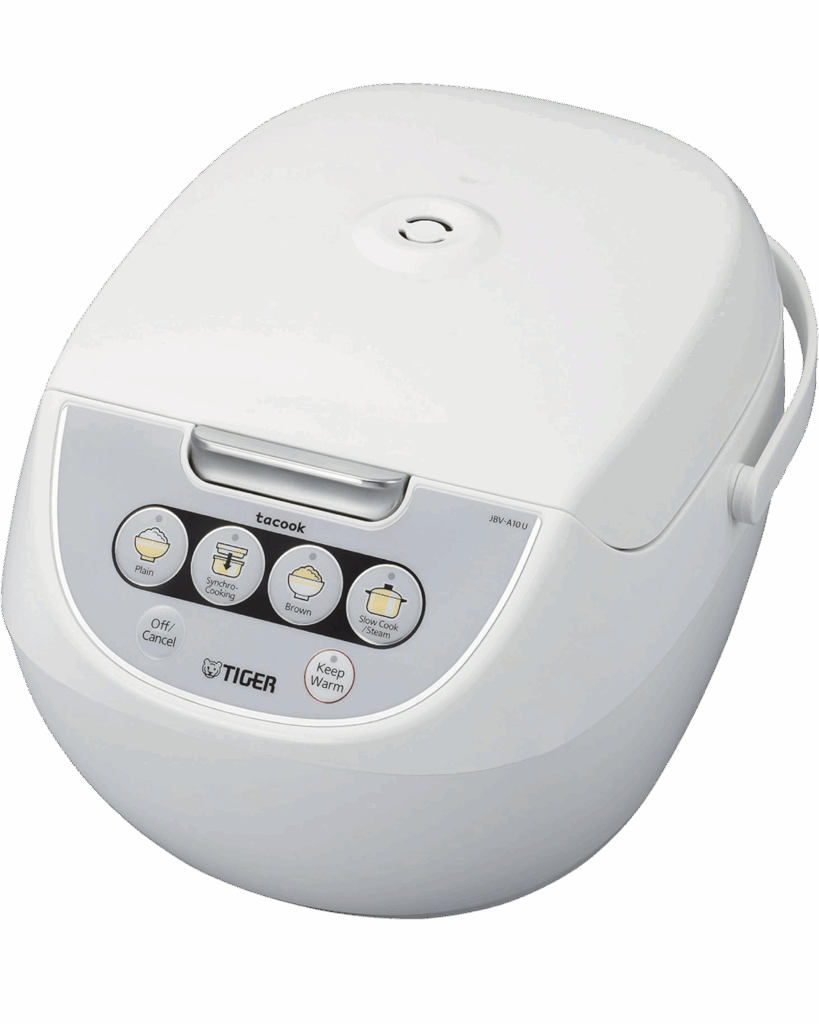
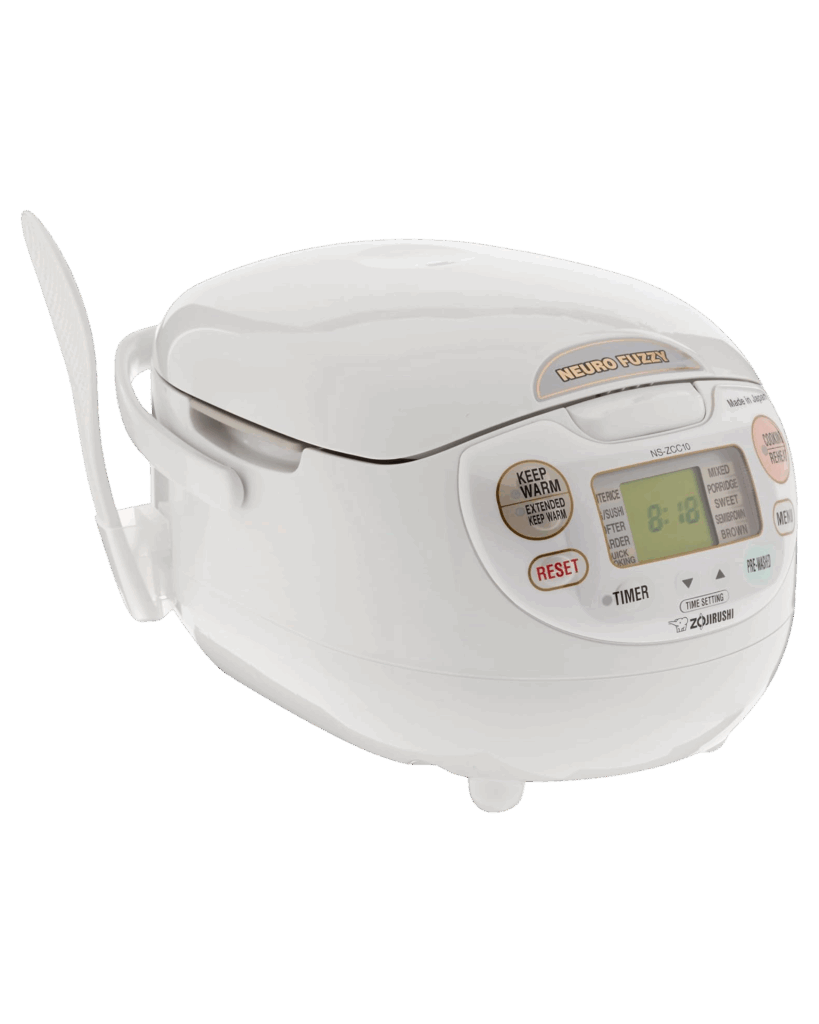

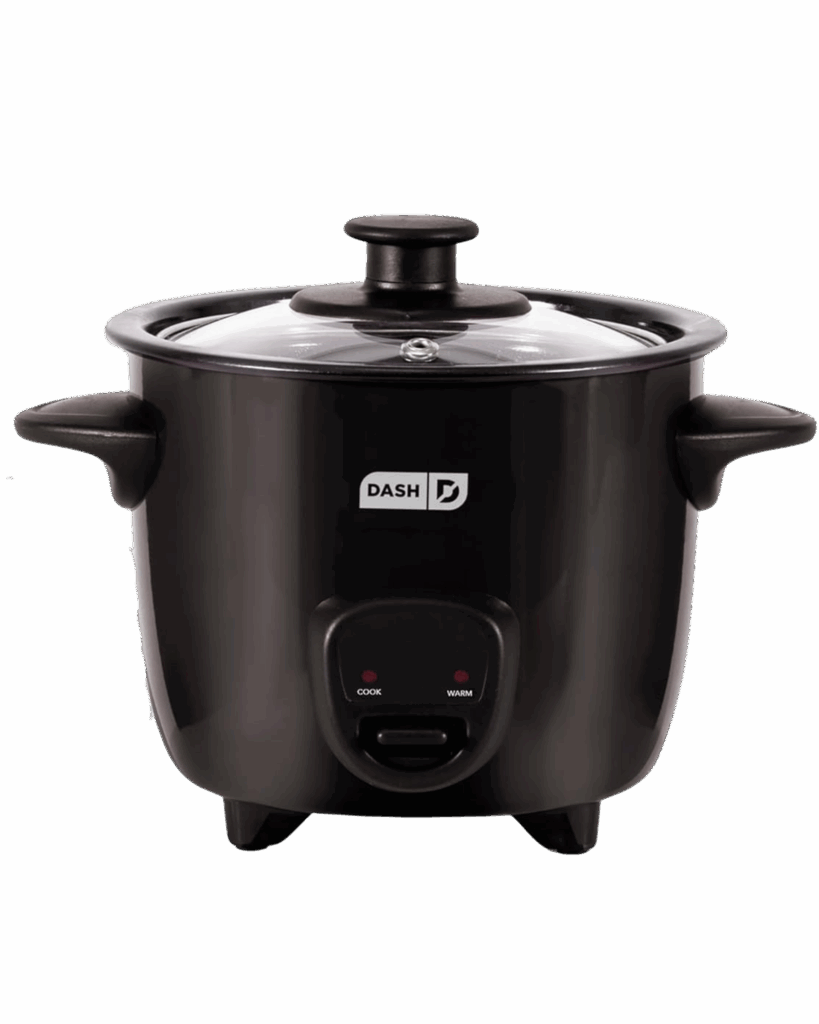



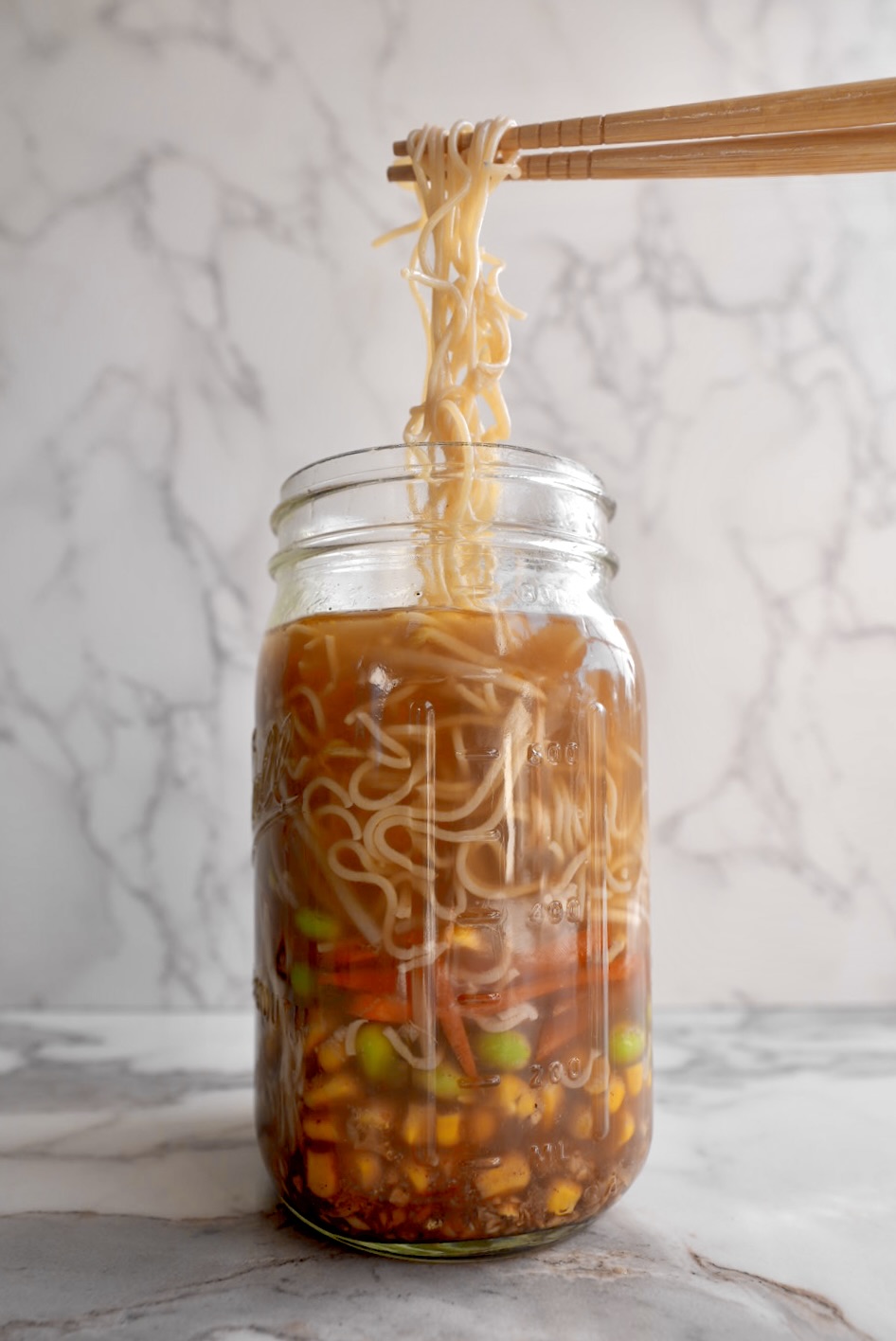
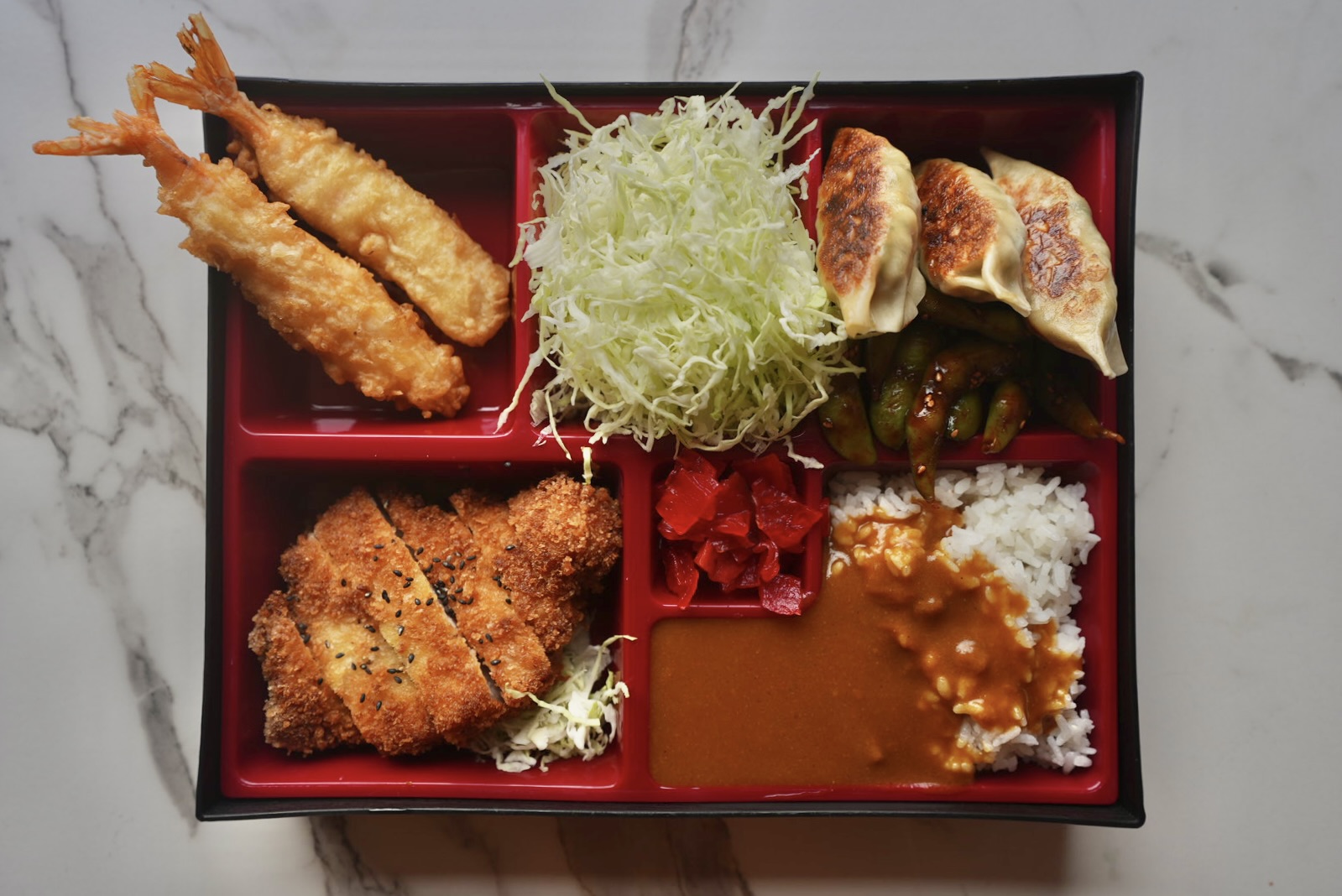
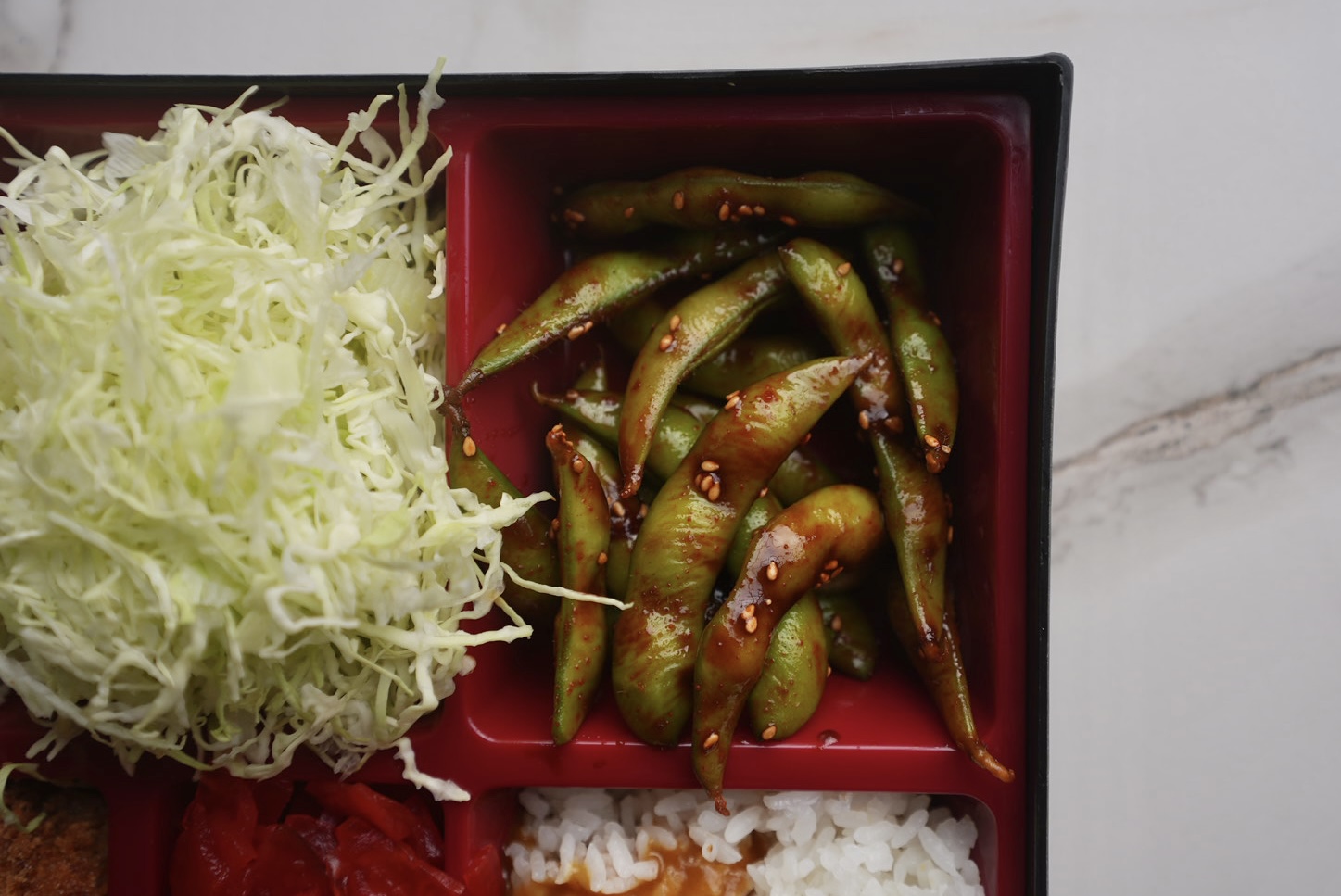
Love how simple and easy your recipes are and this gyudon knocked it out of the park!! We thankfully have a Lotte near us, so its easy to great meat cuts. I did back off the 3 TBSP of hondashi and went with 1 TBSP for my taste preference lol. Thank you for sharing these amazing recipes, turkey meatballs are next up for Thanksgiving!
that’s awesome! Sometimes I do a little less dashi too depending on my cravings! Thanks for sharing! 🙂
Underrated comfort food! I personally love this one because I really like onions and savory sauces.
Super underrated! Glad you love this one Zoey 🙂
The onions absorbed all that sweet-savory flavor and brought everything together.
Thank you for your review, Ivy! 🙂
This has become a staple at our house!! Tastes exactly like it did in Japan!
Yay so glad to hear! Thanks Shae 🙂